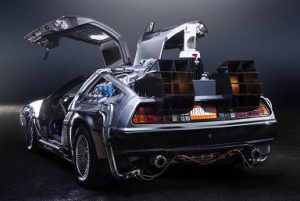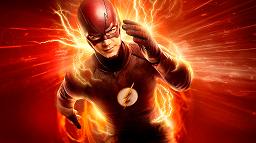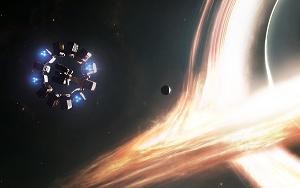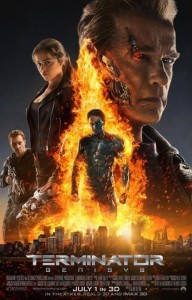This is mark Joseph “young” blog entry #199, on the subject of Time Travel Movies that Work.
A few weeks ago, one of my readers specifically asked what time travel movies I thought actually worked, temporally. My musings on this were interrupted by an extended hospitalization, but I have felt for a while that I ought to be writing something about time travel and for various reasons have not been able to obtain copies of any new time travel movies, so here’s a review of some of the old ones.

Let’s clear out a few issues first. The first two Terminator films, and the third, were all “workable”, but they required a tremendous number of less than probable events. That is, if we were in the world where the onscreen stories were occurring, we would know that we were in a statistically unlikely world, but if we were in the world from which those events might have arisen we would be very foolish to trust that things were going to work that way. A lot of our movies are like that, and I’m not going to include a lot of movies which “work provided a lot of improbable events occur”.
There are also a couple of movies that land on the time travel desk which “work” because either there is no time travel within the film (although time travel issues are raised) or we don’t know any details about it. Terminator Genisys [edit] Salvation is noteworthy in this regard, as there is a lot of concern over what happens if Kyle Reese is killed before traveling back to become John Conner’s father. Also in this category is the very enjoyable Safety Not Guaranteed, in which we are never entirely certain whether the machine actually does travel in time until the end. These are good movies and technically time travel movies that work, but do so because the time travel is outside the frame of the film.
The first movie that genuinely impressed me as near perfect was Twelve Monkeys. It still is impressive, although there are problems with it that I missed because I had not yet recognized them. Perhaps the biggest is that it appears they are using a time travel projector/collector, and as we saw in Timeline they are seriously problematic. That problem is resolved if, as we suggest in the beginning of our Twelve Monkeys analysis, the return trip is not initiated from the future but based on a timer that determines when he returns. So although there are more caveats than there once were, this is still on the list of the better films.
Source Code genuinely blew me away, because it works brilliantly–but not as a time travel story. Explaining what it actually is would be a major spoiler, but if you have not seen it, do so, and then read the analysis.
I genuinely love Eleven Minutes Ago. It is a quirky independent film in which a time traveler accidentally crashes a wedding party, falls in love with one of the bridesmaids, and woos her by returning to the party in eleven minute segments out of sequence. The most difficult part of this film is the card trick, but even that has a better than even chance of working.
Also on the list of films that work is Los Cronocrimines a.k.a. TimeCrimes. It is certainly temporally convoluted, but with a few not entirely unreasonable assumptions we obtain a working story. The time machine itself in this instance suffers from the same problems as that devised by H. G. Wells: once someone is using it, why are they not inside it if someone else tries to use it to travel the same temporal path? However, since no one knows a way to travel through time, we tend to avoid looking too closely at the methods suggested.
That is also the main problem with Time After Time, in which H. G. Wells pursues Jack the Ripper into the twentieth century. The end of the movie might create some genetic problem issues, but that is beyond what we know from the film. Of course, this works largely because the time travel is only at the beginning and not part of the larger story. There are a few temporal hiccoughs in the beginning, though.
I should mention Back to the Future, the first part. It has some nonsense in it concerning what happens to the photo and to Marty when it appears that his history is being undone, and in the end it should not be the Marty we know but the affluent Marty who grew up in that affluent home whom we see in the future, but otherwise this does a reasonable job of producing a replacement theory story. The sequels are fraught with impossibilities and problems, but I saw the original at its twenty-fifth anniversary showing and thought it stood the test of time, even though this was the second analysis (the third film) I had written.
The Star Trek movies deserve mention, particularly Star Trek IV: The Voyage Home. There are some problems with it, but in the main it holds together. The other three time-travel-based films in the series are all over the map, from the disastrous Generations to the slightly problematic First Contact to the challenging Star Trek (2009).
Harry Potter and the Prisoner of Azkaban was a surprise because I knew that the time travel in the book did not work, but discovered that because of one small change that in the movie did. It’s not perfect, but its functional.
I also need to mention Flight of the Navigator, which lands on the list because we are provided with the A-B timeline only, with Davey being delivered to the beginning of the altered C-D timeline at the end of the film. That of course changes everything, and we don’t see how, but we can envision a solution to the time travel problems (indeed, more than one), and so reasonably can include it in movies that work.
There are other time travel movies I like and would recommend, not because they work easily but because they’re funny (Frequently Asked Questions About Time Travel, Blackadder Back & Forth) or engaging (Happy Accidents, The Time Traveler’s Wife) or intriquing in their ideas (The Jacket, Next), but you can read my analyses of those and many other films, along with theory discussions, correspondence, and other articles, indexed from the main Temporal Anomalies in Popular Time Travel Movies page.
[contact-form subject='[mark Joseph %26quot;young%26quot;’][contact-field label=’Name’ type=’name’ required=’1’/][contact-field label=’Email’ type=’email’ required=’1’/][contact-field label=’Website’ type=’url’/][contact-field label=’Comment: Note that this form will contact the author by e-mail; to post comments to the article, see below; or visit the site forums.’ type=’textarea’ required=’1’/][/contact-form]




